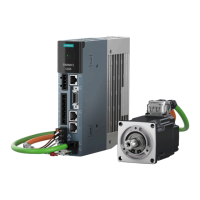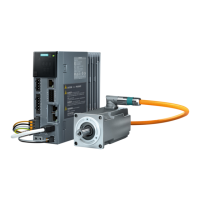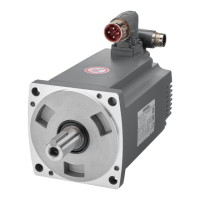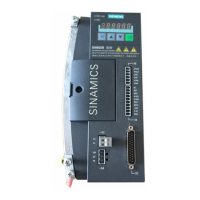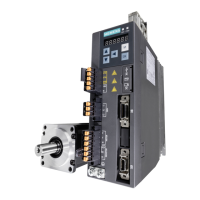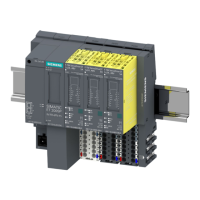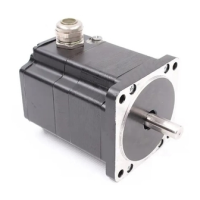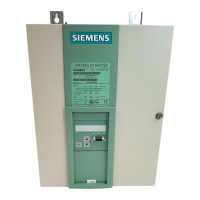The following conditions must be met simultaneously when selecting the braking resistor:
• The calculated braking
energy required in the application E
br
must not exceed the maximum
braking energy E
max
. If E
br
< E
max_int
, you don't require an external braking resistor. If E
br
>
E
max_int
, you must use the external braking resistor. Select the external braking resistor with
E
max_ext
> E
br
.
• The braking power required in the application P
br
must not exceed the maximum peak power
P
max
. When using the internal braking resistor, if P
br
> P
max _int
, you can adjust the braking
duration t
on
. If the requirement (P
br
< P
max_int
) of the specic application still can not be
satised, you must use the external braking resistor. Select the external braking resistor with
P
max_ext
> P
br
.
• The average braking power required in the application P
avg
(arithmetic mean of the braking
cycle) must not exceed the maximum continuous power P
cont
. When using the internal
braking resistor, if P
avg
> P
cont_int
, you can adjust the braking cycle duration T. If the requirement
(P
avg
< P
cont_int
) of the specic application still can not be satised, you must use the external
braking resistor. Select the external braking resistor with P
cont_ext
> P
avg
.
You can nd the resistance data of the internal braking resistor for each frame size in the
table "Internal braking resistor of the SINAMICS S200 converter product line (PTI version)" in
Section "Internal braking resistor (Page512)".
Calculating the braking energy, the braking power, and the average braking power
• Calculate the braking energy according to the following formula:
-
Q
Q
(
EU
-
PRW
Note
As the friction
is not taken into account in the above formula, less energy is fed back to the
servo drive system in practice than that calculated in the formula.
• Calculate the braking power according to the following formula:
P
br
= E
br
/ t
on
• Calculate the av
erage braking power according to the following formula:
P
avg
= E
br
/ T
E
br
/J Application-specic braking energy
J
mot
/kgm
2
Moment of inertia of the servo motor
For the technical data and characteristics of the 1FL2 motors, see Section "Tech‐
nical data and characteristics of the 1FL2 (Page537)".
J/kgm
2
Moment of inertia
of the driven mechanical system in relation to the shaft of the
servomotor
n
1
/r/min Initial speed
n
2
/r/min Speed after braking
P
br
/W Application-specic br
aking power
P
avg
/W Application-specic aver
age braking power
Technical data
13.1Technical data of the converter
SINAMICS S200 pulse train servo drive system with SIMOTICS S-1FL2
Operating Instructions, 11/2023, FW V6.3, A5E51646767B AA 515

